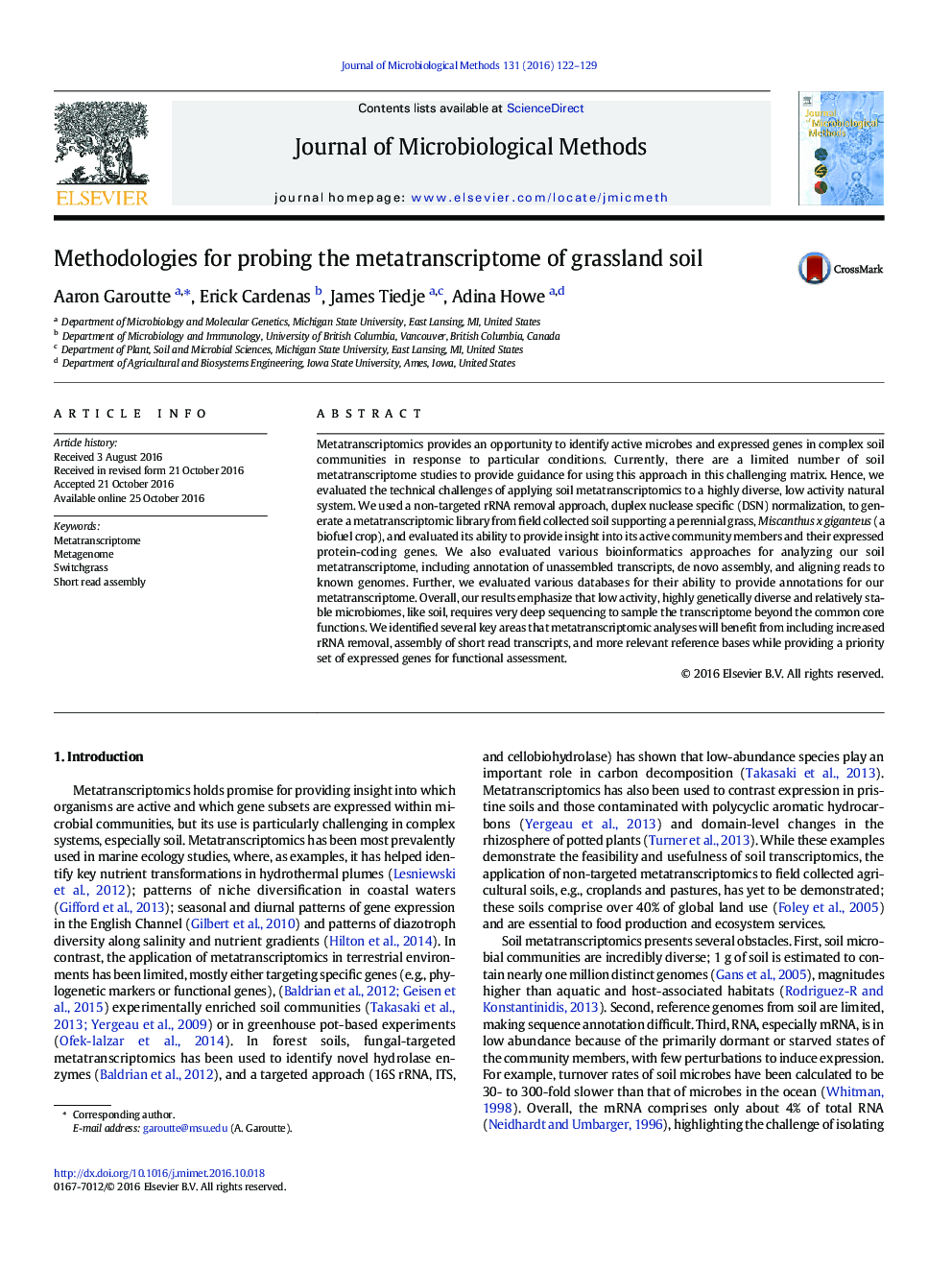| Article ID | Journal | Published Year | Pages | File Type |
|---|---|---|---|---|
| 5522371 | Journal of Microbiological Methods | 2016 | 8 Pages |
•Metatranscriptome from agricultural field-collected soil•Novel method of rRNA removal•De novo assembly improves annotation quality.•Introduction of soil organism specific genome database
Metatranscriptomics provides an opportunity to identify active microbes and expressed genes in complex soil communities in response to particular conditions. Currently, there are a limited number of soil metatranscriptome studies to provide guidance for using this approach in this challenging matrix. Hence, we evaluated the technical challenges of applying soil metatranscriptomics to a highly diverse, low activity natural system. We used a non-targeted rRNA removal approach, duplex nuclease specific (DSN) normalization, to generate a metatranscriptomic library from field collected soil supporting a perennial grass, Miscanthus x giganteus (a biofuel crop), and evaluated its ability to provide insight into its active community members and their expressed protein-coding genes. We also evaluated various bioinformatics approaches for analyzing our soil metatranscriptome, including annotation of unassembled transcripts, de novo assembly, and aligning reads to known genomes. Further, we evaluated various databases for their ability to provide annotations for our metatranscriptome. Overall, our results emphasize that low activity, highly genetically diverse and relatively stable microbiomes, like soil, requires very deep sequencing to sample the transcriptome beyond the common core functions. We identified several key areas that metatranscriptomic analyses will benefit from including increased rRNA removal, assembly of short read transcripts, and more relevant reference bases while providing a priority set of expressed genes for functional assessment.
